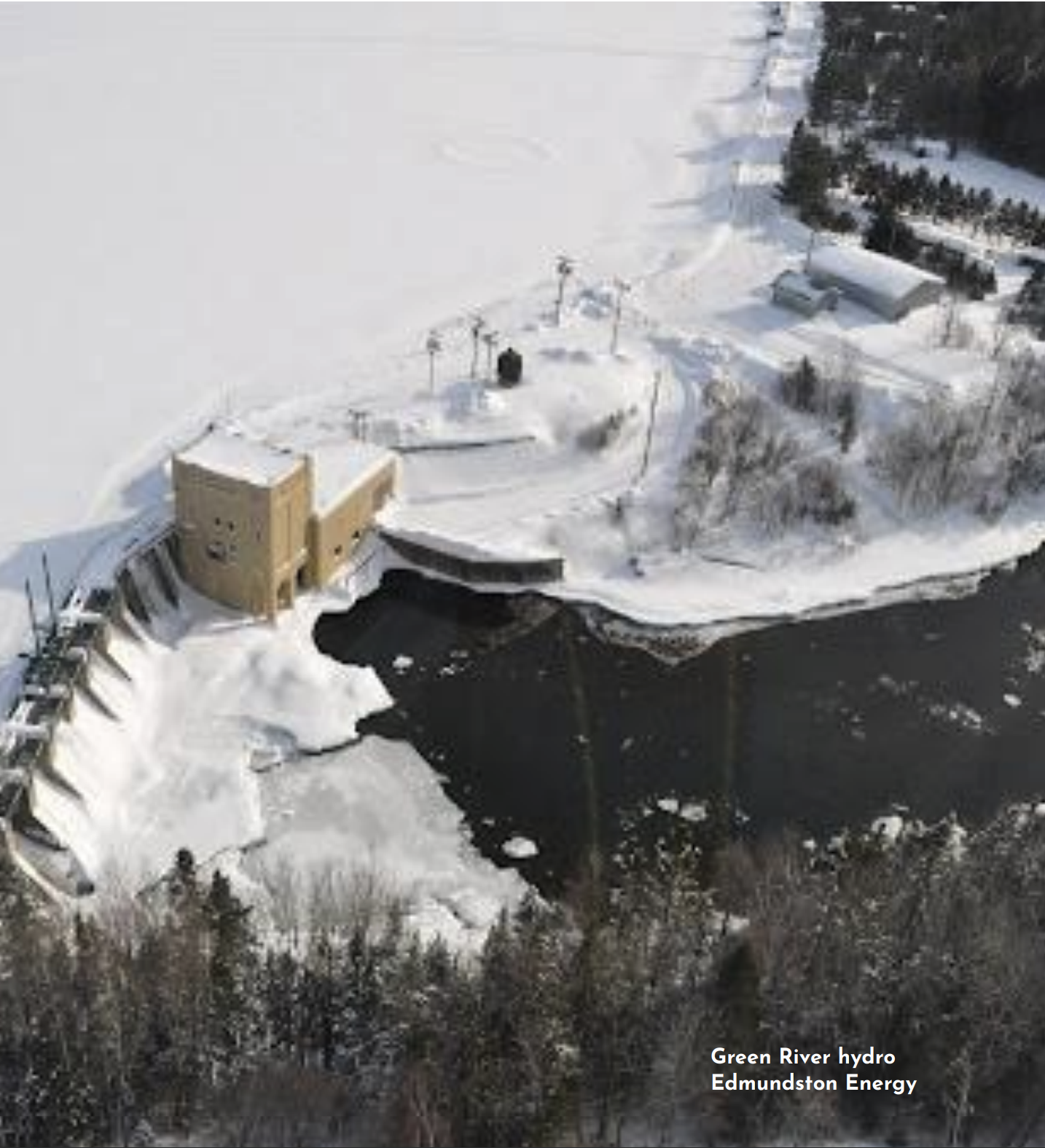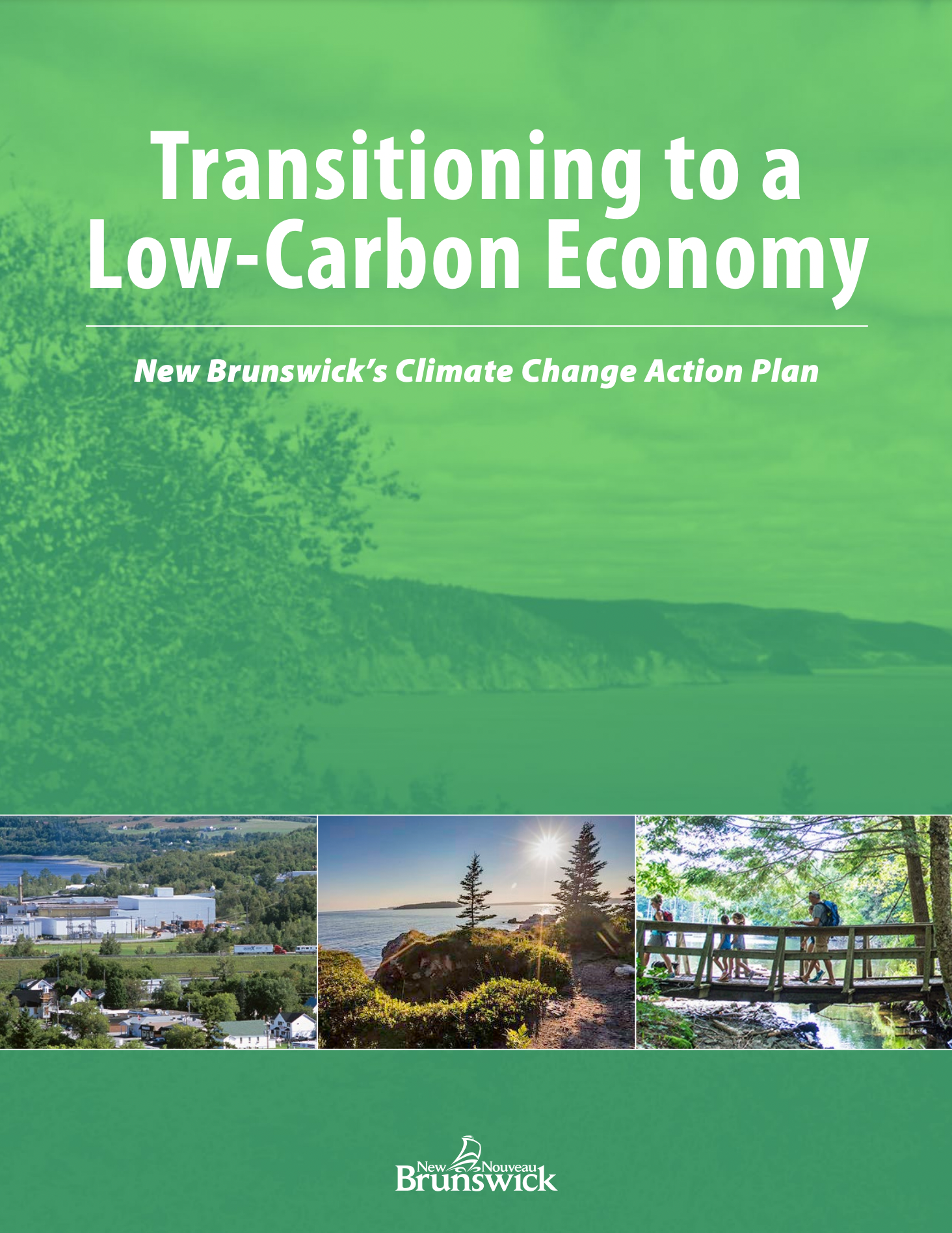Driving Energy Solutions For New Brunswick
Satellite image of New Brunswick at night (source: NASA)
The three municipal electric utilities in the province presented to the New Brunswick Legislative Assembly’s Standing Committee on Climate Change and Environmental Stewardship. This is what they had to say.
January 20, 2022
This week, Saint John Energy Vice-President Ryan Mitchell, Énergie Edmundston Directeur Pierre Roy and Perth-Andover CAO Dan Dionne presented to the Standing Committee on Climate Change and Environmental Stewardship for the New Brunswick Legislative Assembly on behalf of the three municipal electric utilities in New Brunswick (watch video). The following are abbreviated notes and the slides of the presentation as well as three recommendations for the committee.
“Canadian municipal utilities service approximately 27% of Canada’s electricity customers.”
The three municipally owned distribution utilities in the province have a long history of providing reliable service to the customers within our region. We work closely and collaboratively with not only each other but also with the other municipal utilities in the Atlantic region. In Canada, municipal utilities service approximately 27 per cent of Canada’s electricity customers with the others being served by investor-owned utilities or Crown-owned utilities.
In terms of size, to put our impact into perspective, the municipal electric utilities in New Brunswick are responsible for the distribution of electricity that is approximately equivalent to the entire province of PEI.
The municipal electric utilities currently enjoy strong customer support within our respective regions, which we measure periodically. Having the support of our customers in our communities is certainly not something that we take for granted. And we can each vouch that responsible climate change action is important to our customer base, which is why we appreciate the efforts of the committee to update the province’s climate change plan.
A unique value proposition
Our commitment to environmental and financial sustainability by providing low-cost and reliable energy solutions for our customers is complemented by our growth mindset. We believe the green economy is presenting incredible economic growth opportunities for not only the communities we serve but also the entire province.
Much of the disruption and energy innovation that is happening is at the distribution level. Given the fact that the municipal electric utilities have a strong track record for innovation and are small and nimble provides a unique value proposition to the provincial energy ecosystem that should be fully leveraged.
Renewable energy
The City of Edmundston owns three hydro facilities going back to 1911 with a nameplate rating of 8.3 megawatts.
Perth-Andover is powered completely by renewable energy as 100 per cent of its load is served by the Tinker Dam, owned by Algonquin/Liberty, as has been the case since 1923.
Saint John Energy has an agreement to procure wind energy from Natural Forces, which is currently in the process of constructing a 42 megawatt wind farm inside the Saint John city limits that will be online by the end of this calendar year. In addition to renewable energy generation, Saint John Energy has also deployed what was the world’s first Tesla Megapack utility scale storage solution which is a 1.25 megawatt/2.5 megawatt hour battery.
Climate actions
The municipal electric utilities have a strong focus on sustainability and have completed and continue to advance efforts that would have an impact on climate change. So in addition to our strong focus on renewable energy:
All three of the municipal electric utilities have converted 100 per cent of our street lights to highly efficient LED lights.
Each municipality has established a community energy plan which depends on each municipal utility to enable.
Saint John Energy launched an innovative Home Heat Saver program which provides its customers an overhead Google map view of heat loss that was occurring in their rooftops due to inadequate insulation.
Perth-Andover and Saint John Energy are both renting heat pumps to their customers.
It is worth noting that in New Brunswick approximately 70 per cent of homes are heated by electricity. By converting customers from baseboard heat to heat pumps, we are seeing them migrate to a solution that is four times more energy efficient. This is an example of a win-win-win solution for our customers, the municipal electric utility and NB Power.
New Brunswick’s challenges
Although we believe that there are a lot of opportunities by embracing the green economy, we also recognize and are sensitive to the many challenges facing New Brunswick:
“There is a significant reliance on imported renewable energy to obtain targets...but we should look to further develop renewables here at home.”
There are difficult decisions ahead as it relates to the fate of the coal-fired generation plant at Belledune.
The installed generation capacity of the current fleet inside of NB is more than 50 per cent fossil fuel-based and aging.
Peak energy demand in the province is extremely expensive. According to numbers published by Natural Resources Canada, emissions from peak energy emit twice the greenhouse gases as off-peak electricity generation does.
Although New Brunswick enjoys 40 per cent of its energy flowing from renewable energy, we feel compelled to mention that there is a significant reliance on imported renewable energy to obtain that percentage. Imported renewable energy is, and should continue to be, an important component of New Brunswick reaching net zero but we should look to further develop renewables here at home.
This province is seeing an increase in the severity and frequency of storms and floods such as the ones that have had a significant negative impact in New Brunswick, and certainly along the St. John River, in recent years.
Disruption is an opportunity
There is currently unprecedented change happening in the electricity sector. When you look at this from the distribution utility perspective, the municipal electric utilities are facing many of the same disruptions that NB Power is facing.
“We view this disruption as creating exciting opportunities for the industry to affect climate impact and stimulate economic growth.”
The traditional supply of energy has been a one-way flow – from the generator to the customer, now it is becoming increasingly easy for customers to become producers of their own energy to satisfy a portion of their requirement and inject electricity back onto the grid.
This is creating added operational complexities and applying pressure to the traditional business model.
And although this could be viewed as a challenge, we view this disruption as creating exciting opportunities for the industry. It allows us to become leaders in enabling the change such that we can affect climate change impact and stimulate economic growth for the region.
Climate action opportunities
We believe there are many exciting opportunities for New Brunswick, such as:
“Climate action is not only supported but is expected, and presents an opportunity for a wartime-like effort or call to action that could prove to be a real province-building initiative.”
There is an incredible entrepreneurial, academic and innovation ecosystem around electricity here in New Brunswick, largely initiated by NB Power, that can continue to be leveraged. New Brunswick has a diverse and impressive end-to-end supply chain related to smart grid when considering the contributions from the University of New Brunswick, the Université de Moncton and the New Brunswick Community College, which are further complemented by the Smart Grid Innovation Network, CyberNB, and the New Brunswick Innovation Foundation.
New Brunswick has significant expansion potential as it relates to renewable energy. There is very little solar on the system as the cost of solar remains high but it’s certainly trending in the right direction. However, there is significant opportunity to further develop low-cost, onshore wind energy.
The development of renewable energy would directly result in renewable energy certificates becoming available which could be sold to industrial customers who want to reduce their scope 2 emissions to help ensure their ongoing competitiveness.
There is a significant amount of federal funding available across many different programs that we should work to ensure is fully leveraged.
Based on surveys that we have conducted, climate action is not only supported but is expected, and presents an opportunity for a wartime-like effort or call to action that could prove to be a real province-building initiative.
Innovation, renewables, storage
In response to the clean energy and climate change challenges, our utilities have moved efficiently to embrace innovation, electrification and renewable energy generation and storage.
Today, this includes advancing smart grid technologies targeted primarily at demand-side management, deploying public EV charging infrastructure, and our energy efficient products, such as LED street lights, hot water heaters and heat pumps.
We are proud of our ability to collaborate with each other and external partners to move nimbly in embracing new technologies, products, and services and we certainly hope that the climate change committee will see the municipal utilities as a resource that can be leveraged to drive real climate change action.
Recommendations
We have three recommendations for the Standing Committee on Climate Change and Environmental Stewardship. The first recommendation is our primary one.
1. Update provincial energy policy with an independent panel
To ensure that the next iteration of the Climate Change Action Plan is successful we believe it requires an updated provincial energy policy. The last time the energy policy was updated in New Brunswick was over 10 years ago – as this committee knows energy and the environment are more interconnected than ever.
A provincial energy policy renewal should leverage an independent panel which could be comprised of three to five industry experts, who would seek to engage New Brunswickers and the appropriate subject matter experts. We appreciate that updating the energy policy is a significant undertaking so would suggest that in the interest of time and with a sense of urgency there be an initial focus on electricity and the environment with specific attention toward the following area:
On the supply side, seeking to establish decarbonization pathways to net zero for the electricity system.
Advancing beyond 80 per cent non-emitting supply and accommodating what will undoubtedly be significant future growth requirements will need careful consideration.
Establish a provincial electrification strategy that would guide the conversion, to the extent reasonable, of the transportation and home heat sectors to electricity.
With strategies around the supply and load side, the focus should transition to the tactical level in terms of addressing what would be the legislative, market and regulatory barriers to the deployment and integration of distributed generation/storage, demand response and smart grid technologies.
We recommend that the NB Power Integrated Resource Plan, released in 2020 and now largely obsolete due to the current position of the federal government on carbon pricing and equivalency, be refreshed in a manner that is transparent during its development and more responsive to changes in the future.
We also believe that this independent panel should consider how might municipal utilities, communities, and First Nations be further empowered to leverage their resources and strong interest to play an increasing role in the green economy.
2. Grow smart grid, share data
Our second recommendation is that the government strongly support and grow the smart grid innovation ecosystem through additional funding and grant programs as well as improving data transparency by enabling near real-time access related to the provincial demand for electricity, including the level of emissions for each generation facility and costs.
New Brunswick has established itself as a centre for excellence as it relates to smart grid innovation and currently enjoys strong engagement by academia, NB Power, the start-up community, the municipal utilities and the Smart Grid Innovation Network and CyberNB. Innovation in smart grid should be expected to deliver much needed demand side management tools and new intellectual property that can not only be deployed in the province but could also be exported beyond New Brunswick.
3. Implement climate adaptation measures
Our third and final recommendation is that there would be increased consideration toward Climate change adaptation measures such as:
“We hope that the climate change committee will see the municipal utilities as a resource that can be leveraged to drive real climate change action.”
Redesigning the utility tax, which is currently a disincentive to invest in distribution infrastructure. New Brunswick, to the best of our knowledge, is the only province that levies a form of property tax on distribution utility infrastructure. The utility tax is assessed at 2.18 per cent of the net book value of an asset on an annual basis which means, on long life, there can be a tax imposed of almost 50% of the original equipment cost over the life of the asset.
Enacting legislation to ensure a head pond management plan is completed in a comprehensive manner to ensure public safety and to mitigate possible damages to public and private property.
The impact of climate change, forestry practices, and clearing of land for agricultural purposes has greatly impacted NB Power’s ability to safely monitor and control the annual spring freshet. A review should be completed on best practices for head pond management in key areas such as maintenance programs, siltation monitoring, bank protection, and ice mitigation techniques to prevent jams and devastating flooding events. For example, regular updates of river bottom mapping to observe head pond changes would be extremely beneficial.
NB Power should be legislated to ensure that head pond management is completed in a comprehensive manner to ensure public safety and to mitigate possible damages to public and private property. A portion of revenues from hydro facility sales should be established to finance head pond maintenance and improvements to assist with mitigation.
Establishing a business mitigation program for Perth-Andover that would be comparable to the successful residential relocation programs of 1993 and 2012 so as to establish a one-time solution for a long-term problem.
Numerous businesses in the Perth-Andover area have been severely impacted by flooding after the construction of the Beechwood generating facility in 1955. Devastating floods in 1976, 1987, 1993, and 2012 have resulted in lost sales, damages, and the loss of equity in their properties.
Two independent studies commissioned by the province after the highest recorded level of flooding in 2012, both indicated that flooding in Perth-Andover could be two meters above the 2012 flood. Business owners are still hoping for the business mitigation program that was promised in 2012 by the provincial government. The residential relocation programs in 1993 and 2012 have been very successful.
The residential relocation program was about protecting residents and their properties. A business mitigation program is about saving the viability of businesses and our community. Unfortunately, another devastating flood will happen again in Perth-Andover. We would like to request that government be proactive and develop the business relocation program promised in 2012.






